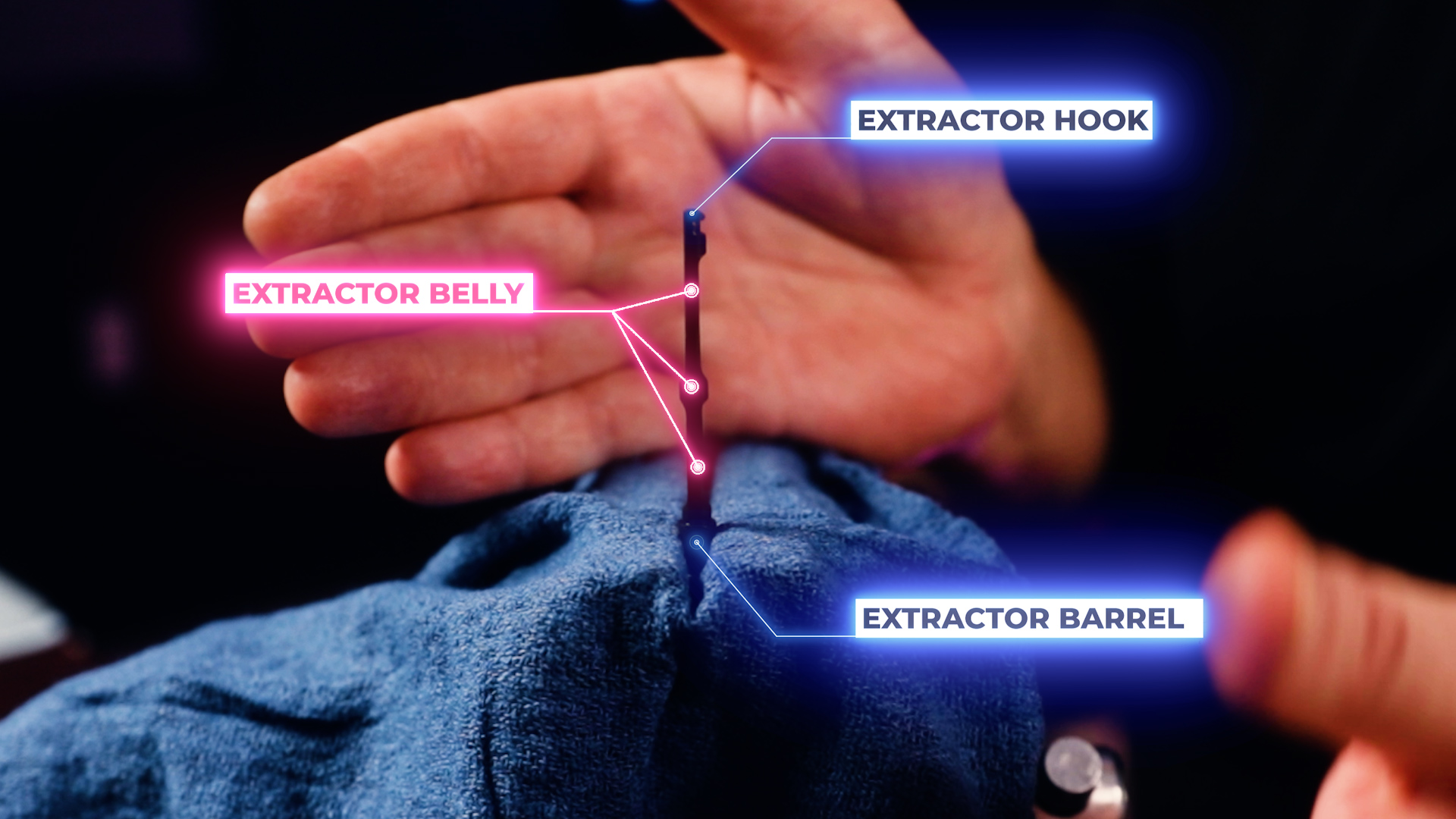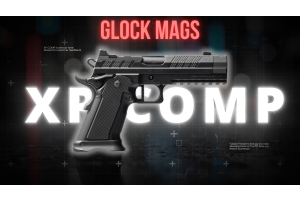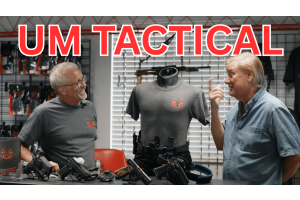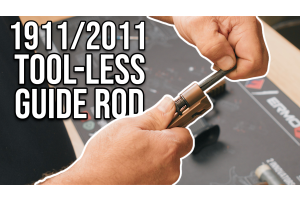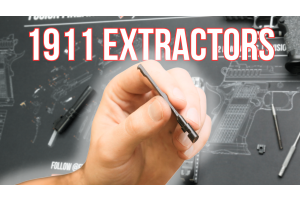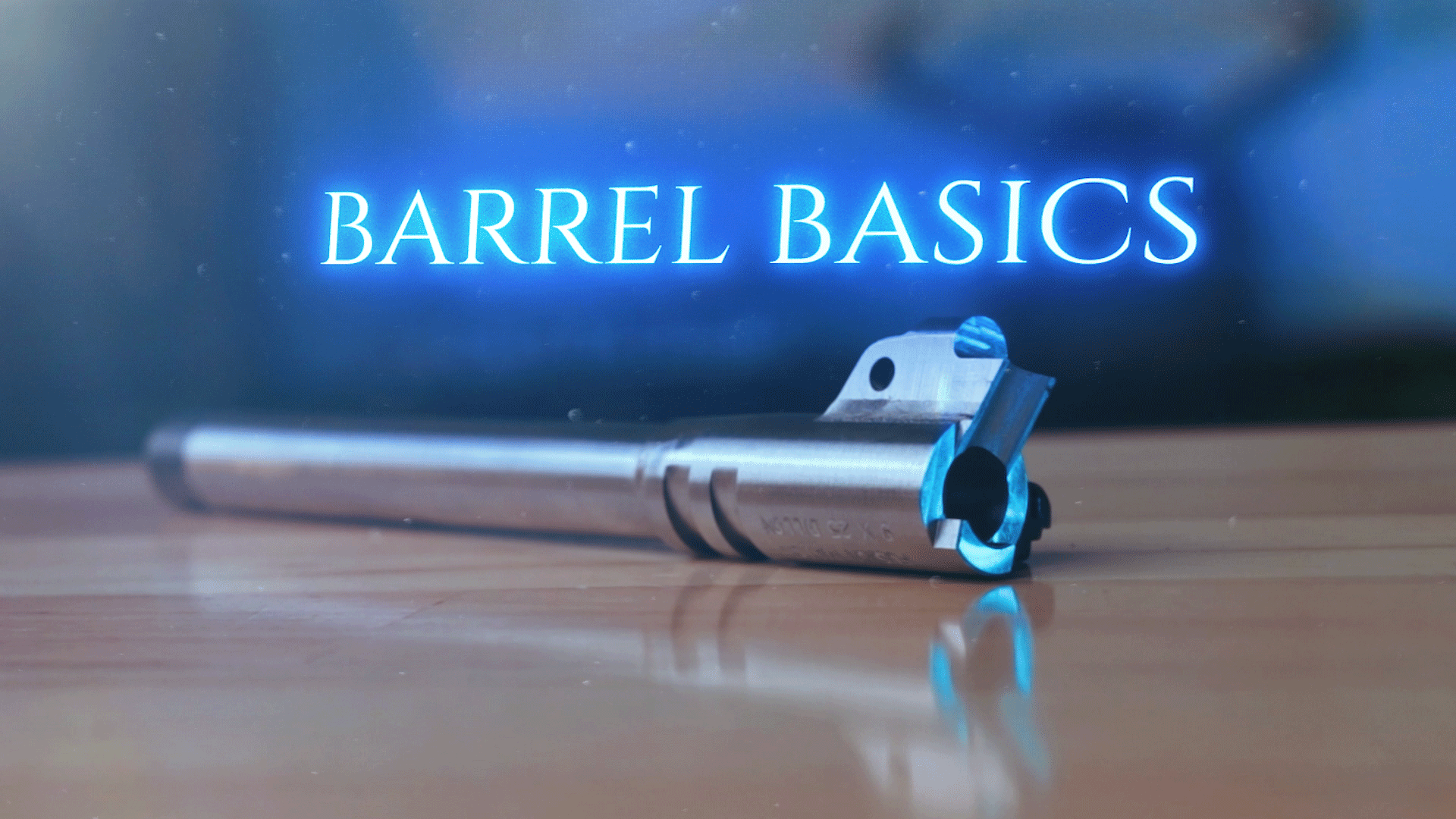
How Recoil Springs Effect 1911 Feeding | 1911 Feeding (Ep.5)
0%
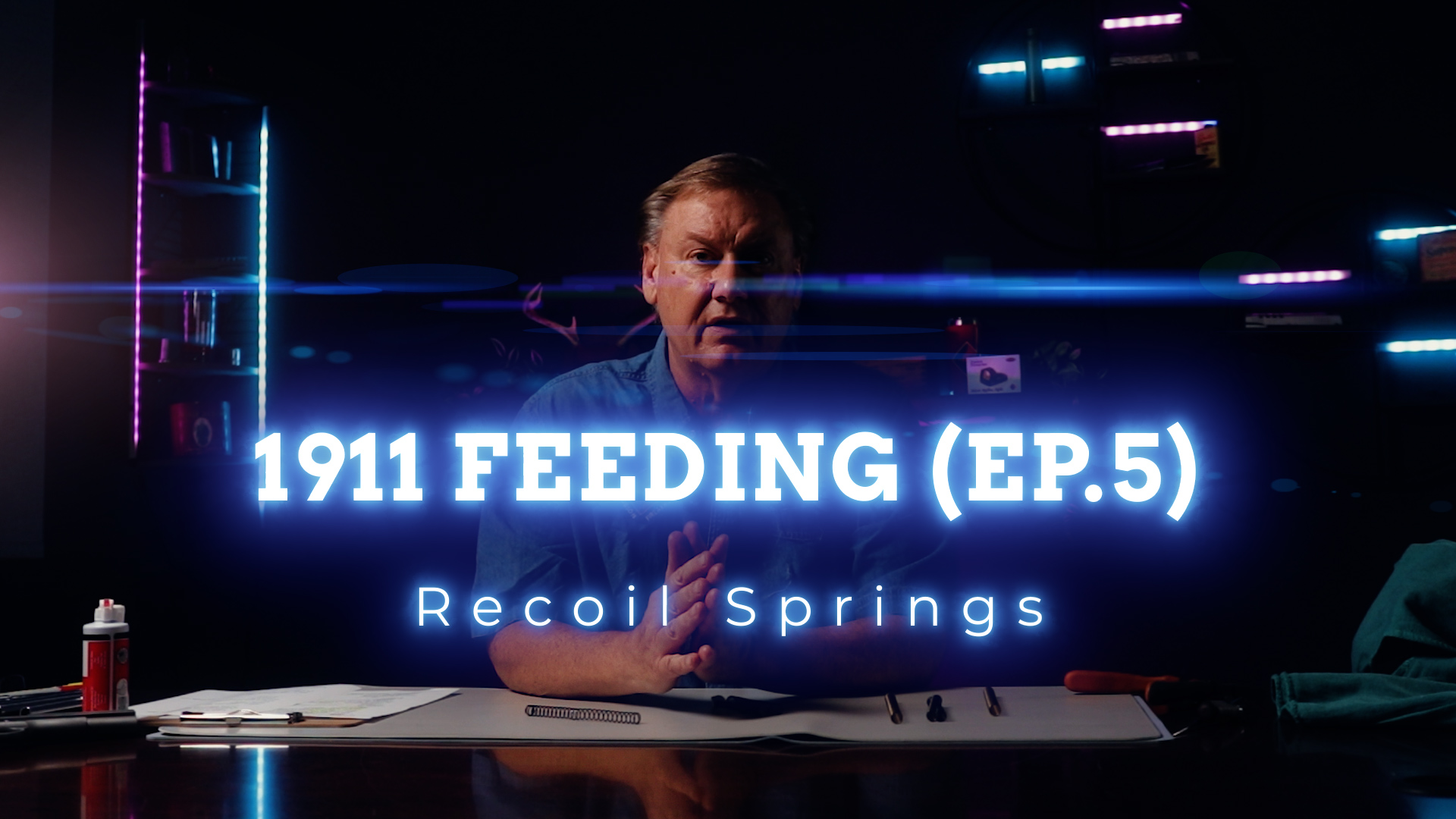
In this video we will cover the relationship between recoil springs and feeding in your 1911. This should help clear up any questions you have about this subject and if not leave any questions down in the comments. As always thanks for watching and have a great day from the FUSION FIREARMS FAMILY!!!
The Role of Recoil Springs in Ensuring Reliable Feeding in 1911 Pistols
Have you ever experienced feeding issues with your 1911 pistol? It can be frustrating and even dangerous if your gun misfires or jams at the wrong moment. One potential cause of feeding issues is the recoil spring, which is a crucial component that helps to absorb the force of recoil and return the slide to its proper position after firing a round.
In this article, we'll delve into the role of recoil springs in feeding and how to determine if you have the correct spring for your firearm. We'll also touch on other factors that can affect feeding, such as the caliber of your 1911 pistol, the type of ammunition you're using, and the intended use of your firearm. By the end of this article, you'll have a better understanding of how to troubleshoot and fix any feeding issues you may be experiencing with your 1911 pistol.
So, what exactly does a recoil spring do? As the name suggests, it helps to absorb the force of recoil when you fire your gun. When you pull the trigger, the firing pin strikes the primer, causing the gunpowder to ignite and produce a burst of hot gases. These gases push the bullet out of the barrel and create a recoil force that pushes the slide of your firearm backwards. The recoil spring helps to absorb this force and return the slide to its proper position, chambering the next round.
Now, let's talk about how recoil springs can affect feeding. One of the main factors to consider when selecting a recoil spring is the caliber of your 1911 Pistol. For lighter calibers, such as 9mm, having too heavy of a recoil spring can cause feeding issues. This is because the slide may not be actuating all the way back far enough, causing the empty case to not be ejected properly and the next round to not be fed into the chamber properly. In these cases, switching to a lighter recoil spring can often fix the issue.
To test if your recoil spring is the correct weight, start by shooting your firearm with the heaviest spring and see if it goes to slide lock back. If it does, then you are within the parameters of the ammunition and spring weight for proper functioning. If it does not, try switching to a lighter spring and see if that fixes the issue.
It's important to note that recoil springs are not usually the primary cause of feeding issues, and there are many other factors to consider such as the feed ramp, barrel throat, extractor tension, and magazines. However, in certain cases, the recoil spring can play a role in feeding and it's worth considering if you are having issues.
In addition to the caliber of your 1911 pistol, the type of ammunition you're using can also affect recoil and, in turn, feeding. Different types of ammunition can produce different levels of recoil, and you may need to adjust your recoil spring accordingly. For example, if you are shooting a 9mm handgun with +P or +P+ ammunition, which generates more recoil than standard pressure rounds, you may need a heavier recoil spring to properly absorb the increased force. On the other hand, if you are shooting standard pressure ammunition, a lighter recoil spring may be sufficient.
To wrap up, it's important to carefully consider your recoil spring when it comes to ensuring smooth and reliable feeding with your 1911 pistol. Whether you are using your gun for self-defense, target shooting, or competition, selecting the correct recoil spring for your caliber and intended use can make a big difference. Remember to also consider the type of ammunition you are using and be mindful of other factors that can affect feeding, such as the feed ramp, barrel throat, extractor tension, and magazines. By following these tips, you can help to ensure that your 1911 pistol is operating at its best and you can have confidence in its performance.
CHECK OUT OUR MINDS CHANNEL: https://www.minds.com/fusion_firearms/
CHECK US OUT ON FACEBOOK! -
Facebook Tech: https://www.facebook.com/Bobs1911bench
-Facebook Info: https://www.facebook.com/FusionFirearms
CHECK OUT OUR INSTAGRAM: https://www.instagram.com/fusionfirea...
Music: https://artlist.io/
FULL TRANSCRIPT
hi folks we're going to look at recoil springs and feeding [Music] hi folks Bob Serva from fusion firearms all right we're going to go back to our feeding series we still have a few more things to clean up videos on feeding so today we're going to look at recoil springs because there's a lot of questions on recoil springs and feeding so what do you have to be concerned about with recoil springs and what's out there that are variables with recoil springs and can affect your feeding so let's look at a few things so all right we we look at recoil springs i like pretty much the conventional conventional recoil springs whether it's carbon steel style or stainless most of our springs are stainless but there's regardless they're they're both gonna work real well when i look at feeding and and spring tension or for 1911 generally springs do not play as much part in feeding as people think most of the time you're going to really if you have feeding issues you want to look at a bunch of the other things that we have down with your feed ramp your barrel throat your 130 second gap your extractor tension possibly your magazines okay so all those type things you want to really look at where do i see the recoil spring come into play with feeding well generally you'll see it with the lighter calibers again we'll look at the nine millimeter you'll get people that will call in oh my nine millimeters it doesn't shoot well nine times out of ten it is because you got too heavy of a recoil spring in it for the ammo that you're shooting so the the and just think about this your slide is really not actuating all the way back far enough so the the cartridge the empty case is never getting out of the out of the ejection port fast enough or and because your slide's so sluggish it's not ejecting properly and it's not really coming all the way back to back dead center to feed the next round up into the into the chamber either so again that's something that we do see a huge effect with recoil springs is generally on lighter calibers now a lot of people say well bob how do i how do i know if i have too heavy of a spring well we sell different spring sets with our firearms we also we also give you extra springs recoil springs with the with the kit that you get so what you want to do is generally start with the lightest spring and then work your way up or some guys will start with the heavier spring so if you're shooting with a heavier spring and your gun was feeding okay and you're shooting with the heavier spring and all of a sudden it won't go to slide lock back ah well that's a that's number one consideration right there it throws a red flag up that geez i don't have slide lock back why well again your slide is probably not coming all the way back to back dead center so that it can that it can go to slide lock position so what else can affect slide lock well a bunch of things obviously the slide this slide stop itself could be bad the follower on the magazine could be bad there's a bunch of other factors there too but when we're focusing on recoil springs today the recoil spring becomes an issue there so where do we go well you go and you take your heavier spring you go out shoot your gun all right the gun's not locking back okay first indicator or it's not feeding right first another second indicator red flag going up all right now say i had a 14 pound in my my nine millimeter now now i'm going to go down to say a 12 pound so i'm just gonna put two rounds into the gun maybe one i'm just going to shoot it and see if it'll lock back now that's it just shoot it see if it locked back if it locks back good you're kind of we've been in the parameters of that ammunition and the spring weight that you put into the into the pistol to to bring you back to slide lock back and generally if you're going to go to slide lock back then you're feeding your slides going to be going back to back dead center close enough to feed properly so you're not going to have an issue there either so again if the 12 pounder didn't work then go down to the 10 pounder so a lot of guys even with with with heavier heavier loads say like 10 millimeter bob what what should i use for a 10 millimeter well i usually suggest a standard where to start and then if you have heavier loads well how do i know again if if the load is going to if the if the spring is heavy enough for the load and i'm not beating my frame up okay well again go to the heavier spring shoot it shoot it a few times see if it goes to lock back you'll pretty much know right away if the gun is not going to the slide's not coming to lock back that okay i got too much of a too much spring tension in there so again that's one big critical thing in feeding to look at is your is your spring tension because a lot of people will over spraying put too much spring in there pound wise and next thing the slide's not cycling very well so that's that's one good thing one big thing to look at the other thing is springs if they're kinked if they're bent those are things to look at also flat springs well going into some other items flat springs i don't really love flat springs why i have nothing against flat springs other than again it bastardizes the parts that are going into your 1911 you generally need a special guide rod which again is off spec or off standard and and there's only specific places where you can get to flat springs so yeah you might get 20 percent use more use out of a flash spring and again i'm not even so sure that that that's a maybe i mean guys everybody says well when should i change my springs and my coal again that's pretty much up to you but i've got guys that have had 10 000 rounds using the same spring and i get colts that come old colts that come in here for rebuilds that have had the same spring in it since 1932 and and the spring is still working it's not great shape don't get me wrong it's not fatigued it is it probably should be changed but it's still working so again it's it's pretty much discretion and it is probably if you're if you're shooting an awful lot it's probably good to freshen your springs up maybe every 7000 rounds or so some guys say they like to do it at 3200 rounds 3500 rounds again that's going to depend on you and your loads that you're shooting and there's a lot of factors there on what's going to fatigue that spring so again that's just something for you to watch as you're shooting if you see the dynamics of the pistol starting to change then yeah change out some spring see if that helps you out probably will it can't hurt right and it's it's not a huge cost so again that's something to look at so the the other items are you have dual spring systems which i do like dual spring systems for say the defender and officers model they really help the dynamics and and the operation of the pistols out and in the in the shorter barrel models your your three inch models your three and a half inch models once you get out of there i i i usually just go right back to the to the single spring you might still want to go obviously if you're going to bull barrel you're going to want to go with a reverse plug in that but again i look at i look at the spring itself and and what poundage you're going to use and and again even if i'm going with a reverse plug system do i want just a gi guide rod in there do i want a two piece guide rod or i want a full length one piece so there's a bunch of different options for you to choose from there and again most of that's personal preference or the ease of taking the firearm apart and what's easier for you so again those are things that you'll want to make that decision on your own or you can call in for tech help and we can kind of guide you through those things a few other things is guys will say well i got a spring and i i want to keep trying my gun but i they're both 18 pounders and i really want to see what i can do well within limits you can cut a spring back okay and there's no real general rule at this but generally you can use a pair of electrical wire cutters you can use a grinder belt sander and just nip it and take it off but if we're ever playing with something experimental or say somebody's working up hand loads and i'm working on my own hand loads and i'm playing with it a little bit what i'll do is if i obviously have the springs available to me so i would just go grab another spring if you don't rule of thumb is generally you go back about two and a half coils on it and you put it down and you cut it you cut the end of the spring off now that can be done within reason you got to remember that on any type of spring it's going to lose more mechanical ability as you keep cutting it shorter so and you can cut it short to a point where again you're not locking up properly i guess that's one other item if you do go too light of a spring you can actually get where your slide is not going in the battery all the way so that's one thing you want to look at and why that is is because it can't overcome the the the inertia needed to actually get that cartridge up under the extractor bring it up onto the breach face and get it into the chamber so you're stopping short somewhere so those are things that you want to look at there's also other causes that we we've talked about with the barrels that can actually cause that too that same condition you want to look at the hood of the barrel make sure that it's not hitting one side or the other and you're starting to see well i got a lot of wear on one side of my hood well maybe it's the hood when it's coming into the slide and locking up and blocking up on the breech face here it's hitting one side or the other kind of hard and again it's making it a little bit more difficult there's too much resistance there and it's making it difficult for the the barrel to swing up and go into battery so just because you see a condition happen there there could be more than one variable that's causing that or the variable that you're thinking about that's really not causing it's not the spring a lot of guys will say well geez i did i had a barrel problem like that but all i did was put a heavier spring in well you really didn't solve the problem you just the spring is just putting a band-aid on it because it's slamming that thing in there harder to bring the ba barrel into battery which there's nothing wrong with that but again fitting the barrel hood up on top would have been the way to really correct that and then just keep your standard weight spring because any resistance like that especially when you get into the lighter calibers again will end up causing feeding issues you look at you saying boy my feed ramp's not not feeding right or my barrel's not feeding right and it's not even that again it you may be hitting up here on your on your on the on the top of the barrel hood so again it's just you got to look at all those variables and what's really causing that type of feed feed problem condition but i do i do like the dual the dual spring systems they work really nice with a reverse plug pretty much on your officers and defender barrels they're bull barrels anyway even if you have a coal that is got a bull barrel and they put a bushing which i don't really understand why they do that but that that bushing that bull barrel is the same size as if you were just if you had a bushingless slide and you were just riding that way with without that big bushing race cut that they put in the front of the coals so i do like these like i said for the smaller smaller type guns so again i hope that helps you out on your on on one of the feeding issues with springs because i see a lot of guys they just want to like they have a feeding issue and they just want to run to another spring and yes sometimes that might work but generally it's i usually see it as an 80 20 thing which 20 percent of the time yeah that different spring change might help you eighty percent of time it's some other mechanical issue that really has to be looked at such as your feed ramp barrel hood reach face extractor tension feed ramp on on the barrel or the frame itself chamber barrel throw we can go on and on so are you bumping the inside of the the slide stop lug so or do you have a bad magazine but again if you have a gun that is feeding well at one point and then all of a sudden the dynamics change well yeah that's probably a good indicator let's just try a new mag or let's just try a new spring so again that's probably the best way to to take that route so again i hope this helps you guys with feet under issues of feeding springs are a big topic and there's so many different variables of springs there's variable twist springs there there's flat springs you want to use what works for you but again i like to do things that are more standardized that's one reason i don't like the flash springs because i'd rather have standardized products that regardless you can still replace it you can still work with it you can still find something to get your get your pistol working if you had to you're not specifically cornered into a spot where i have to buy this style because it doesn't work on my guide rod anymore or it doesn't work with my end cap anymore or it doesn't work with this so again just think of all those variables before you jump into some of the some of this trick stuff going on okay all right thank you very much thank you for watching thank you for helping us build this youtube channel and we'll be back again with more



